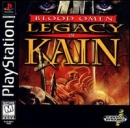There is something about the PS5 audio solution that just hit me, and it actually could make sense to Sony's approach.
Is not that Tempest audio will change gaming experience. Is about not paying licensing fees and universal reception. Since 4k became a new standard, audio decoders needed to evolve into different solutions for a deeper immersion, each requiring a different setup and with it licenses.
Sony wants to provide a great experience without limiting it to certified devices. Obviously quality will vary from setup to setup.
You are going to get the best based on the speaker specifications you have (tv speakers, soundbar, full audio system, etc)
This can provide Sony control over a license fee that they do not need. It will be dumb and stupid to pay a license to dolby or others if you have Tempest. That is why the tempest strategy is an universal one. Is about reaching and cutting costs.
Say you have an XBOX SX, with dolby support, but you don't have a dolby sound system, you are stuck with standard audio transcoding through your tv speakers. In Viceversa, lets say you have a dolby audio system but your XBOX sx doesn't support it. Then again you're stuck with Standard transcoding. Tempest 3d Audio wants to change that and deliver the best transcoding possible using your available speakers.
The take into this is that is not going to be that much better that what is already available. It will be a virtual solution for cheap/integrated speakers. This is not going to convert your tv speakers into a 1000 watts sound system, but it will send better audio modulation and flexibility to them.
I may be (will be) wrong on this, so feel free to correct me, because audio is not my stronghold.
Reference
https://wccftech.com/dolby-atmos-can-also-support-hundreds-of-objects-like-ps5s-tempest-says-dolby/
Last edited by alexxonne - on 21 March 2020























































